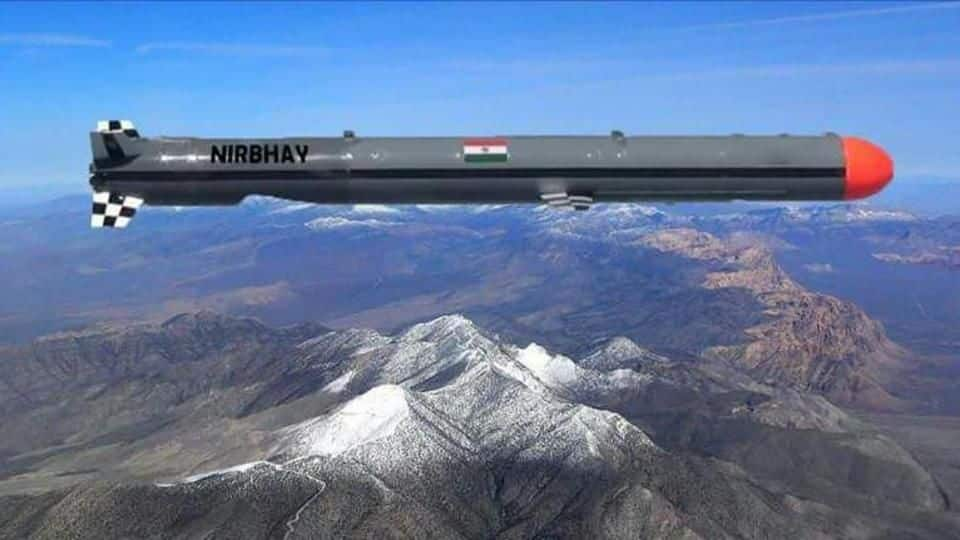
#DefenseDiaries: India tests Nirbhay cruise missile, here's why it matters
What's the story
After two back-to-back failures, India successfully conducted a flight test of the indigenous 1,000-km ranged subsonic Nirbhay cruise missile. The Nirbhay is the most crucial land-based weapon system currently under development in India. The cruise missile project is also among the most difficult technologies to master. Why is the Nirbhay missile so important for the Indian military? What are its capabilities? We explain.
Statement
Sitharaman hails DRDO's success following Nirbhay 'majestic flight'
The Nirbhay missile was successfully launched by the Defense Research and Development Organization (DRDO) at 11:20 am, today, from Integrated Test Range (ITR) at Chandipur in Odisha's Balasore. The Ministry of Defense said the missile took-off as programmed and "majestically cruised" for a duration of 50 minutes at a range of 647-km. Defense Minister Nirmala Sitharaman has "hailed the success of DRDO."
Tests
The road so far
The Nirbhay's maiden test, held in March 2013, failed after it veered off course due to problems with inertial guiding system. On October 2014, its second test was successful but the missile didn't maneuver as desired at lower altitudes. The third test, held in October 2015, failed as the missile crashed. The fifth test, held in October 2016, failed after it veered off course.
Information
What are its specifications?
The Nirbhay is meant to fly at a range of around 1,000km at a speed between 0.8 and 0.9 Mach. It has a length of 1,500kg and is 6-meters long. Reportedly, the Nirbhay can carry 24 different types of conventional or nuclear warheads.
Explained
How Nirbhay transforms into a UAV
The Nirbhay missile blasts off like a rocket but then turns into an aircraft similar to an Unmanned Aerial Vehicle (UAV) or drone. After early-flight, once its rocket motor falls off, it deploys wingsets and a turbine engine kicks in allowing it to fly like a normal aircraft. The Nirbhay features a terrain-following capability, allowing it to map the contours of the ground.
Capabilities
Cruise missiles cheaper, mobile and stealthy than ballistic missiles
Cruise missiles such as the Nirbhay offer the longer ranges of ballistic missiles but are cheaper and more mobile. Their smaller sizes mean they can be launched from land, air-borne bombers, warships and even submarines. The Nirbhay is intended to fly at an altitude of just 100 meters or less to evade radars. It's also meant to loiter before picking out its targets.
Significance
Why the Nirbhay missile matters for India
Once inducted, the Nirbhay missile would allow India to launch attacks deep into Pakistan and China without the risks of losing any manned assets. As per its stated range, the Nirbhay is capable of targeting the Pakistani cities of Lahore, Islamabad, Peshawar, Rawalpindi, and Karachi. The Nirbhay missile is crucial for India especially because Pakistan has already developed the 700-km Babur cruise missile.